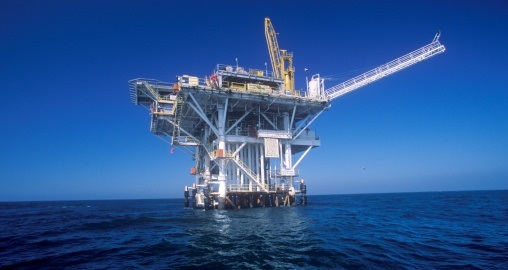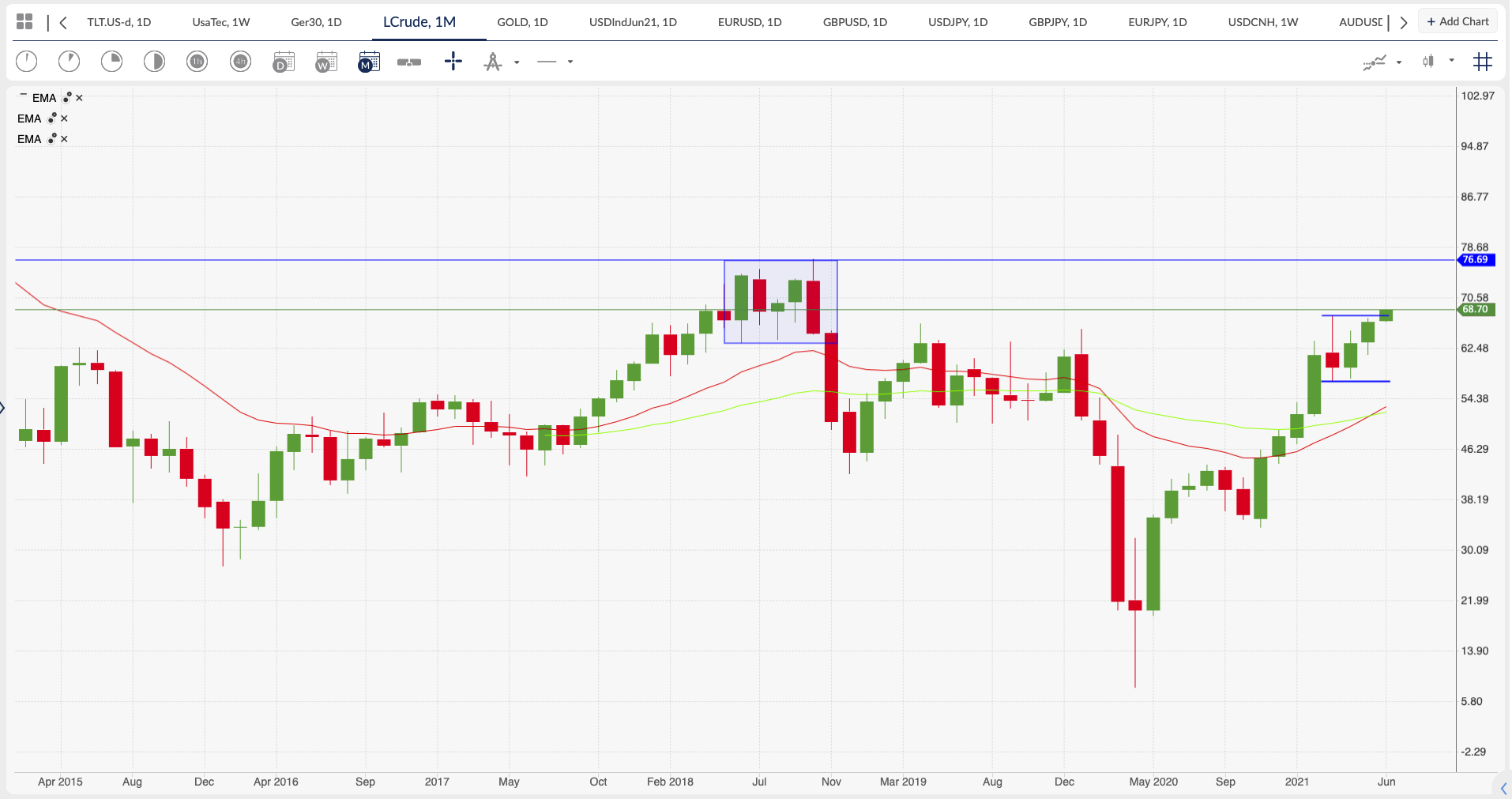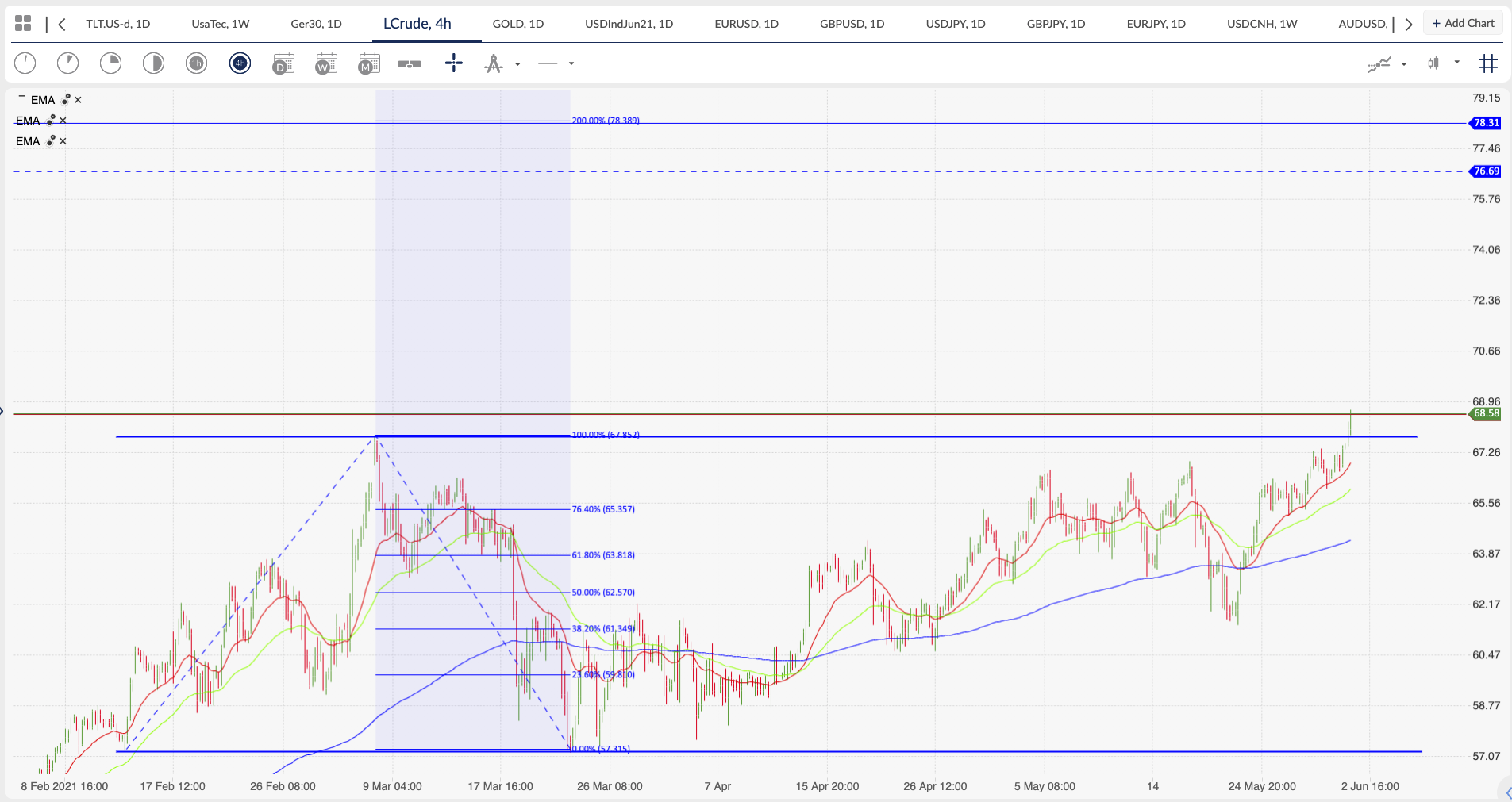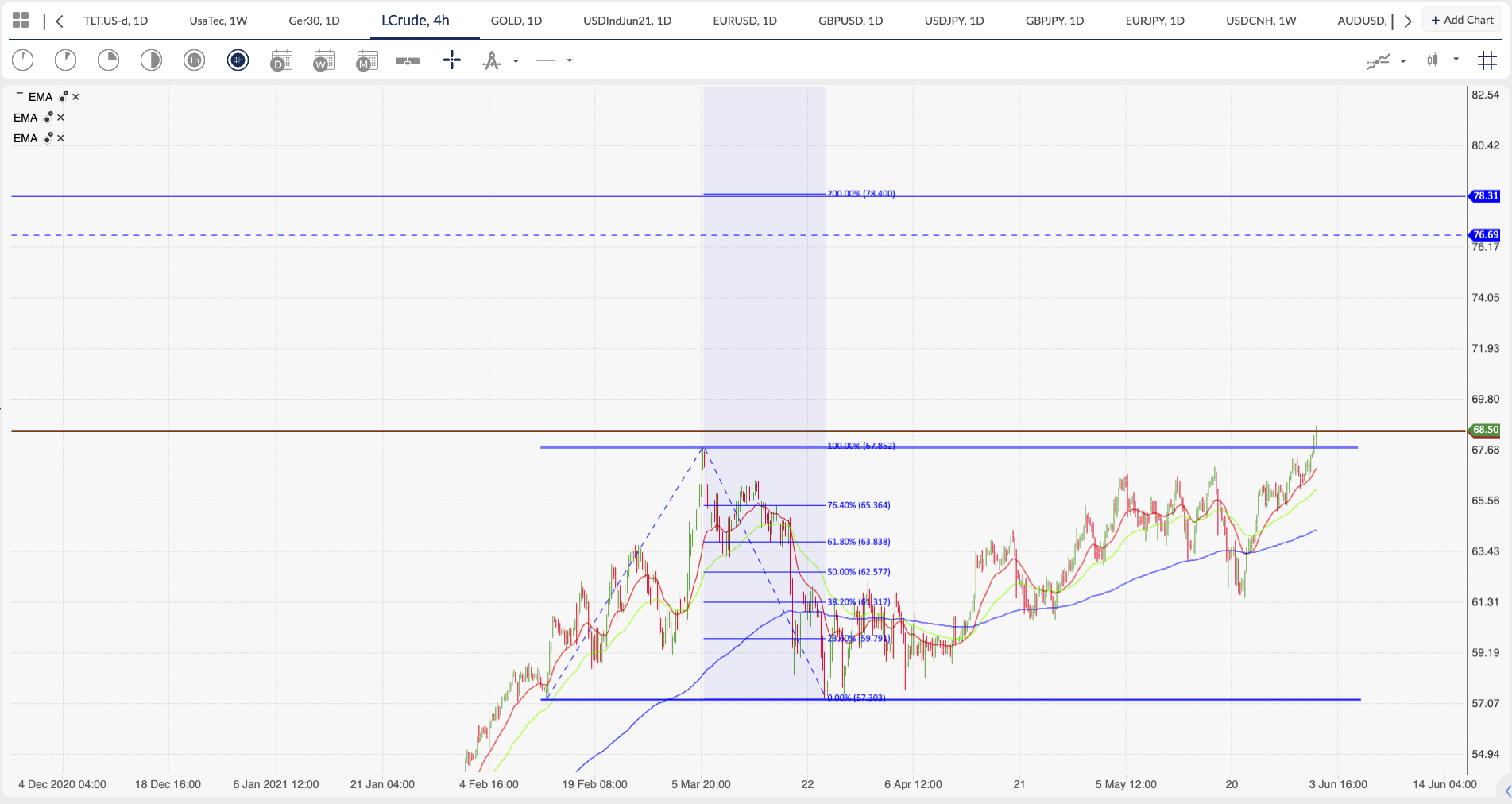Commodity Analysis – Oil
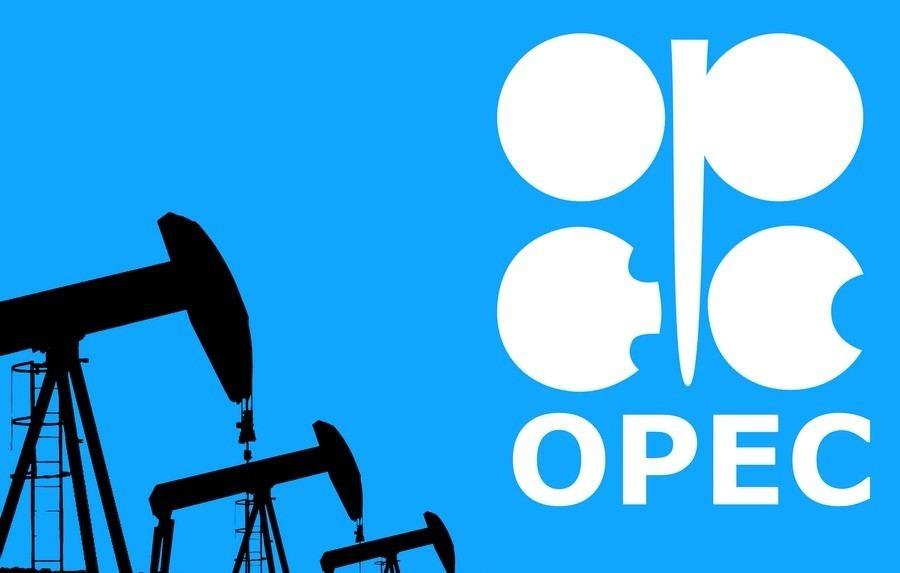

During the Coronavirus pandemic OPEC+ countries agreed to cut their overall oil production by 9.7 million barrels per day at the 10th extraordinary meeting held on April 12, 2020. This was the largest oil production cut ever negotiated aimed at stabilizing oil prices. The agreed 9.7 mb/d production cut was planned for the two months starting on 1 May 2020. Then during the following 6 months, OPEC+ countries cut production by 7.7 mb/d.
As the cuts were announced oil prices started to rise ahead of the first OPEC+ meeting after Russia and Saudi Arabia failed in early March to reach an agreement on oil production cuts, which had sent oil prices to historic lows. According to an estimate by the US Energy Information Administration (EIA), oil supply exceeded demand by around 6 million barrels per day in the first quarter of 2020 and the gap was expected to extend to 11.4 million barrels per day in the second quarter.
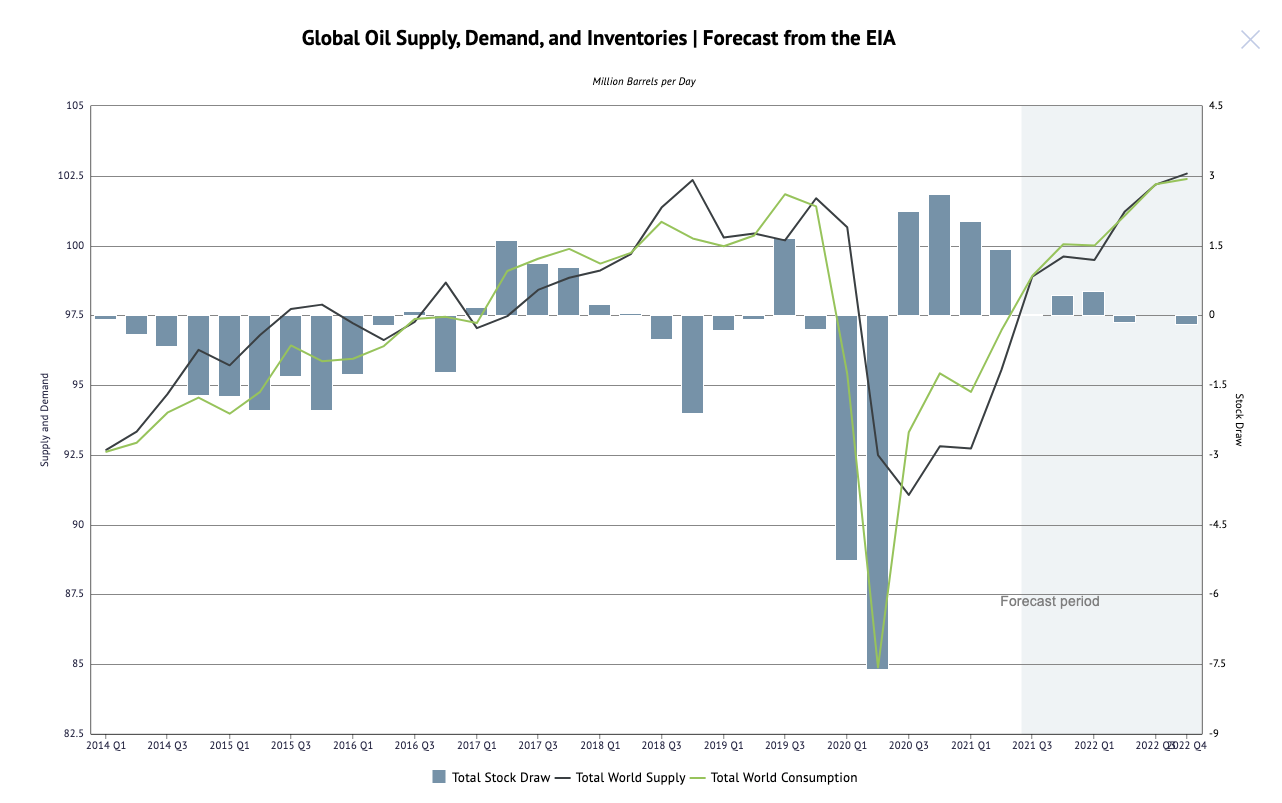

Roll on 14 months and we learned from the International Energy Agency (IEA) that global oil demand may rebound to levels seen before the pandemic in another year’s time, signalling a speedier recovery than its previous estimates. Whilst in today’s meeting from OPEC+, they agreed to increase output to July due to what they saw as a tight oil market. OPEC+ will meet again on 1st of July and by then will have a better sense of how much oil Iran will add to the global supply. “India’s Covid crisis is a reminder that the outlook for oil demand is mired in uncertainty,” the IEA said in its April 2021 Oil Market Report (OMR).
It revised demand lower in Europe and OECD Americas by 320,000 b/d and 515,000 b/d respectively in the first quarter, and cut its forecast for demand in India in the second quarter by 630,000 b/d. But it expects demand to jump to 99.6mn b/d in the last three months of 2021, compared with 93.1mn b/d in the first quarter, as vaccination rates rise and mobility restrictions ease.
The IEA said that based on the current OPEC+ agreement, it sees global oil production growing by 3.8mn b/d for the rest of the year.
In the latest IEA report, it said “After nearly a year of robust supply restraint from OPEC+, bloated world oil inventories that built up during last year’s Covid-19 demand shock have returned to more normal levels. While the market looks oversupplied in May, stock draws are set to resume from June, even with global oil supply on the rise.”
In his remarks at the 30th Joint Ministerial Monitoring Committee (JMMC), which was a videoconference affair due to travel restrictions, OPEC secretary general Barkindo, noted that projections continue to indicate a positive trajectory for economic and oil demand growth, especially in the second half of 2021. The President and Angolan Minister of Mineral Resources & Petroleum, Dr. Diamantino Azevedo, pointed out that the global vaccination rollout is creating optimism for global economic growth and world oil demand.
Earlier the IEA Executive Director, Fatih Birol said: “One thing is clear: In the absence of changing the policies, with the strong growth coming from the U.S., China, Europe, we will see a widening gap” between supply and demand. This, “in turn would put further upward pressure on the prices.”
See real-time quotes provided by our partner.
The price of WTI climbed 3% to trade above $68 for the first time since October 2018. The Joint Ministerial Monitoring Committee (JMMC) did not see any reason to deviate from what OPEC+ had agreed in April 2021. At that meeting OPEC+ decided to return 2.1M barrels per day to the market from May to July, anticipating rising global demand despite surging COVID cases in India. Since the announcement, crude prices have risen from $60 toward the $70 level and are up more than 30% in 2021 alone. If the July increase goes ahead, it is both the last and also the biggest of the three-monthly increments made since May 2021. They will add a further 441,000 barrels a day for the whole group (and another 400,000 from Saudi Arabia if it also rolls back the extra voluntary cut).
This ramp up in OPEC+ nations is going against the ‘Green Agenda’ that the West is pushing. In the Netherlands, a court ruled that Shell must lower its net carbon emissions by 45% by 2030, after environmental groups that brought the action did so in the belief that Shell was doing too little too slowly to address its carbon footprint.
Western oil majors are under pressure to cut carbon emissions faster, especially after the courtroom and boardroom defeats seen last week at Exxon and Chevron. New energy policies proposed by the Biden administration are also discouraging the production of fossil fuels, meaning more business for OPEC+ and the likes of Saudi Aramco (ARMCO), Adnoc and Rosneft.
See real-time quotes provided by our partner.
In the next 4 weeks there is likely to be an increase in gasoline and air fuel usage as the holiday driving season and tourism picks up during the summer period. With a weakening US dollar, we could see the WTI prices trade into a new trading range, having broken out of the last months price action. A measured move would put the next line of resistance up at $78 and that would be after price broke above the 2018 high.
See real-time quotes provided by our partner.
As prices of oil rise the more attractive the US shale industry becomes but the growth in unconventional oil production through recent technological advancements is a real challenge to the OPEC+ member countries like Angola. New fracking technologies have allowed American producers to tap into previously trapped oil at decreasing cost, leading the United States to become the world’s largest oil producer pre-March 2020. The increase of oil production by non-OPEC members like the US, usually reduces the ability of Angola and other OPEC members to push for higher oil prices which is why they rely on creating demand through cutting supply or as per last year, flooding the market to apply pressure to the US shale producers. Crude production from Angola’s existing fields, which has been declining since 2008, is due to dwindle to almost nothing by 2040, according to government projections.
There is a common theme running through macroeconomics currently, with central banks, commodity producers and companies all looking to an improving COVID-19 situation. Supply chain disruptions, inflation and pent-up demand are all based on how well the vaccination programmes can be implemented globally. The US dollar is also at the mercy of coronavirus as monetary policy has been geared up to fight the pandemic and now that political sentiment could be changing. A cheaper US dollar will help support the oil prices, but higher inflationary pressures caused by the rise in energy will ultimately lead to policy changes from the central banks. The move away from fossil fuels is also likely to become more of a hot topic in the coming months as the Western political agenda focuses in on 2030.
